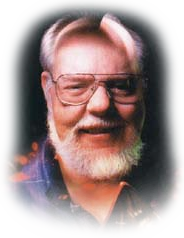Over the past month, I've been discussing arguably the hottest mess of all RPG topics, Alignment. I covered the development of TSR-brand Alignment, how other RPGs chose not follow TSR's lead and how TSR-brand Alignment (which is supposedly objective) is in fact highly subjective. In addition, as previously mentioned, there's a clear tension between Alignment and other parts of the D&D rules set (e.g., GP=XP).
Alignment does have some small value by providing introductory players a guidepost in terms of how to role-play their characters. However, most players quickly grasp the basic concepts of role-playing and move beyond this point.
Moreover, Alignment, as narrowly defined by Gygax, usually raises more issues in actual play than it solves. For example, when the party has both "good" and "evil" characters, intraparty conflict is likely. While intraparty conflict has existed since the beginning of the hobby, not every group enjoys PvP.
Alignment can also produce shocking results during actual play. For example, it is under this aegis that I've seen more than a few very experienced gamers who believe in Alignment as RAW argue that since, in the official D&D universe, there are whole species that are irredeemably evil, behavior that would otherwise be labelled sociopathic is not only justified, but to be encouraged. The most (in)famous example of this is murdering children of "evil" species in the name of "good". Even in the source literature, I'm pretty certain that Aragorn, or any other ostensibly "good" character, would never murder defenseless kids, even it they grew up to be villains. However, you know who did?
In addition, on more than one occasion, I've seen supposedly "good" characters perform acts that most people would consider "evil", merely for convenience, such as murdering unarmed prisoners.
Furthermore, the whole notion that entire species are irredeemably evil is problematic. For one, if everyone has a TSR-brand Alignment, the logical consequence is that there's no free will.
My rules set, Sorcery & Steel, follows the majority of Old School games and simply leaves in-game morality up to in-game play.
One might argue, "What's the big deal? It's all just make believe!"
I would certainly concede that no imaginary creatures are actually harmed whilst playing RPGs, nor am I making any kind of moral panic argument. Certainly, one can play an evil character if they choose. However, being actually evil while calling yourself "good" it breaks verisimilitude for me.
From a Doylist point of view, in my humble opinion, Alignment mostly exists to justify the Murderhoboism in Dungeons & Dragons and those games to which it is a close antecedent. In other words, it exists to paper over the fact that PCs in those games are incentivized to be mass murderers as a result of how experience is awarded.










